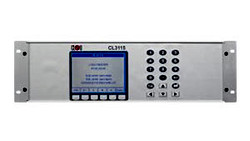In terms of maintaining an economically optimal supply of power, the energy sector refers to the sequence in which electricity-producing power plants operate on an electricity trading platform as a merit order. The lowest marginal costs, or the extra costs by a power plant for the most recent megawatt hour generated, are used to determine the merit ranking.
As a result, the merit order is unaffected by a power generation technology's fixed costs. Up till the demand is covered, power plants with larger marginal costs are added.
Graphically, the principle appears like this:

Merit Order dictates the price
The merit order market model, resulting from the so-called pay-as-clear procedure, has been used continuously since the deregulation of the electricity market more than 20 years ago (Germany since 1998). It was established to ensures that exactly the amount of electricity is available to meet the demand.
After many years of experience, purchasers, such as electricity traders, local utilities, and industry, are capable of accurately anticipating how much energy would be needed the following day and receive adequate offers. The cheapest provider, the priority producers of renewable energies, receives the contract in the first phase. These used to have a price of 0 cents at first. The offers of nuclear power, coal, and gas come next.
The electricity prices are fixed for the next day (day ahead market) at the European Energy Exchange (EEX) in Leipzig, Germany. The energy producers offer the capacity of their power plants in the daily auctions for their marginal costs. The power supply companies are putting their orders to fulfil their demand for the next day.
The intersection of supply and demand determines exchange prices in the power market.
The final offer that is subject to a surcharge is known as the "market clearing price" (MCP) or "spot price."
The stock exchange price for all engaged power plants is decided by the power plant with the highest marginal costs. Power plants can operate a surplus if they can give a cheaper price than the power plant used with the highest cost. The contribution margin balances the company's own fixed expenses.
The Merit Order Effect of Renewable Energies
Permanently dropping electricity production costs change the position of conventional power plants within the merit order. A recent example of such an effect is the increased feed-in of renewable energy sources (photovoltaics, wind energy, biomass). Peak-load power plants are falling far behind in the merit order as new photovoltaic and wind power facilities with marginal costs close to zero join the market.
The energy industry refers to this phenomenon as the merit order effect (MEO) of renewable energies. Conventional power plants still have to compensate for the residual load – the remaining electricity demand that renewable energies cannot cover.
What are the back draws?
Merit-Order is a static description model that can be used to represent short-term electricity pricing. However, the model would also need to take into consideration long-term consequences in order to be able to predict long-term trends in electricity prices.
The merit order effect does not immediately reduce the cost of electricity, as the high investment costs for power generation plants from renewable energies are not taken into account.
The enormously high investment and decommissioning costs of nuclear power facilities and the true overall costs of renewable energies are also not accurately reflected.
The pay-as-clear-based merit order mechanism also requires the trade of all the electricity through the Leipzig Stock Exchange, however this is not always the case. Some producers consume their own electricity. In addition, utilities have long binding contracts for > 85 % of the energy demand. So the actual cost explosion in electricity is only the beginning.
Especially for Germany is with phasing-out of nuclear power a low cost power generation element is gone and has to be replaced with other sources. The last and at the same time most expensive power plant is decisive for electricity pricing. Since these are currently the gas-fired power plants, high gas prices inevitably lead to an increase in electricity prices.
What are the Alternatives?
Even if they are compensated through subsidy systems, renewable energy plants have a feed-in priority under the established pay-as-clear mechanism, leading to their acceptance at the auction.
At present, however, renewable energies are rarely able to fully meet demand. Flexible and constantly available systems, such as storage systems or thermal power plants, provide a solution for this.
An alternative for the actual Pay-as-Clear is the so-called Pay-as-Bid (bid price model). The underlying idea is that the awarded power plant providers receive payment for the pricing they have expressly stated. The market price in this situation would be established after all awarded bids were made known.
The European Union recently proposed to limit the maximum price per MWh for renewables to 200 Euro. This automatically leads to less investment in the expansion of photovoltaics and wind power. Energy producers need planning security to make the necessary investments in electricity generation. The risk of not having enough electricity to fulfil the demand is growing in the lack of proper planning and security.
An excess profit tax is also under discussion, while a gas levy law is already cancelled in Germany before it came into force. (Update, 3 hours after initial publishing, the gas levy will most likely start in October 2022).
Conclusion
Is the merit order energy trading obsolete? The energy market is evolving, and arriving at the answer to this question is complex. The merit order is an economic principle used to dispatch generation in a competitive electricity market. Any change, especially political intervention, will lead to unpredicable side effects.
If you have any questions about our energy storage-, metering-, or system solutions, please get in touch with us. Or share your thoughts with our community in a comment.
Thank you for reading and may the power be with you.
Editor's note: This article was originally published in September 2022 and has been updated for comprehensiveness.





All comments are moderated before being published. Inappropriate or off-topic comments may not be approved.